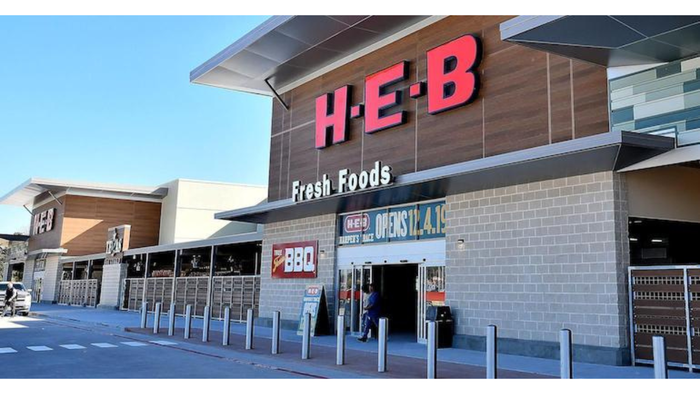At your service 2018-01-01 (1)
January 1, 2018
As in-store bakeries and delis focus on scratch baking, artisan breads and restaurant-quality meals, equipment manufacturers are keeping pace. By Kim Ann Zimmermann Some customers swear that supermarkets pipe the smell of freshly baked bread near the store entrance to draw them to the bakery department. While that may be a retail legend, there is certainly plenty of equipment available to help supermarkets build sales in the bakery and deli departments. As grocers look to step up their game in these areas by offering more artisan products, items that are baked from scratch and smaller portions, equipment manufacturers are developing offerings to help fill these needs. Retailers can find everything from pans to bake mini cupcakes and muffins to innovative merchandisers to showcase their creations. While baked goods and deli offerings have to look good, the equipment used to prepare them should be easy to use and clean, since most supermarkets operate with lean staffs. Additionally, the employees running the equipment typically do not have formal culinary training and have other duties behind the counter. Many retailers are looking to gain an edge by providing a shopper-friendly environment in the deli and bakery, say industry observers. “Our retail customers all seem to be after one thing, improving, or at least re-shaping, the shopper experience,” says Jason Wiley, marketing manager for the retail business area of Columbus, Ohio-based Mettler Toledo. “The service counters, like the deli and bakery, represent the greatest opportunity for personal interaction in the store.” In terms of merchandising, George Parsons, director of case engineering for Kysor/Warren, based in Columbus, Ga., says retailers are looking for display cases that turn bakery and deli offerings into the star of the store. “Retailers are absolutely gearing up to generate excitement in the bakery and deli areas,” says Parsons. “Everyone is looking for any advantage they can create. They are looking for equipment that enhances merchandising efforts by drawing in new customers and keeping existing customers returning to the deli and bakery areas.” Flexibility is also a key driver when it comes to merchandising equipment for deli and bakery, according to observers. Hussmann, based in Bridgeton, Mo., has developed several new products intended to support the increased demand for food-to-go and prepared food programs in the deli and bakery department. Robert Mullen, global specialty products leader for Hussmann, says the company’s Isla line of modular merchandisers can be configured for cold, hot and dry products sold in deli and bakery departments. “Isla allows merchandisers or store designers to develop the right merchandising solutions for their demographic and cross-selling needs,” he says. “After a customer selects a module, Hussmann develops a display concept to assure that the display solution meets the designer’s goals and objectives.” Since it is also important that merchandising equipment allows for flexibility in terms of product offerings and preparation space, Hussmann recently launched the Q3-SP deli preparation case, which allows for refrigerated product merchandising in the front of the case and food preparation in the rear. “This solution gives the merchandisers design flexibility and is used to develop preparation stations for sandwiches, sushi, bakery, pizza, soup and salad,” says Mullen. Observers say that while equipment needs to be designed to maximize staff efficiency behind the counter, it also needs to be energy efficient. “Many of the latest innovations we’re seeing at the in-store bakery level relate to efficiency,” says Alan Crosley, marketing manager for Hicksville, N.Y.-based Empire Bakery Equipment. “Empire’s Double Rack Oven can help supermarket bakeries experience a 30% to 40% fuel savings over similar ovens.” Efficient lighting Another way that grocers can reduce their energy consumption in the deli and bakery cases is with the use of LED lighting, say observers. Hill Phoenix has developed a proprietary brand of LED lighting called Clearvoyant, which provides energy savings of up to 69% over traditional fluorescent lamps, with no mercury, phosphors, lead or harmful ultra-violet rays that can sometimes be found in traditional lights, according to Marjorie Proctor, design and marketing specialist for the Conyers, Ga.-based company. “LEDs last an average of five to eight years, thereby lowering maintenance and replacement costs, reducing waste disposal and the overall cost of ownership,” she says, adding that not only does LED lighting save energy, it enhances the appearance of many products in the deli and bakery cases. “Retailers are choosing LED-type lighting because the low-profile lights eliminate dark spots on products. With an LED light, the color rendering index of 80 or greater provides full color spectrum of the products illuminated, making the items look more appealing to customers.” Officials at Kysor/Warren, which has a relationship with Cork, Ireland-based Nualight for LED lighting for its cases, have seen increased interest among retailers in energy-efficient merchandisers. The company recently added new energy-efficient reach-in door cases to its Stratus line. The cases are available in medium and low temperatures and feature several shelving options. “Display cases that provide greater merchandise visibility translate into more products sold for our customers,” says Parsons. While manufacturers have improved the operating efficiency of cases and other equipment, companies such as Stockton, Calif.-based Miralor USA offer curtains that can save energy by covering the cases when the store is closed. The company’s night curtain uses a two-ply bonded fabric with woven aluminized polyester material to reflect the heat from the store environment away from the refrigerated space. The tough polyester backing protects this woven material from damage and combines with the aluminized fabric to keep cool air in and hot air out, according to company officials. In addition to seeking ways to minimize energy costs, supermarkets are focused on maximizing labor. “We understand that employee turnover is a concern for supermarkets,” says Hussmann’s Mullen. “To support this, we develop our solutions with easy-to-use functionality and controls. In addition, operational manuals are developed for each solution to assure start up, maintenance, and cleaning requirements are clearly stated. As turnover takes place, this can assure availability of information regardless of staff changes. All of these manuals are shipped with each case in addition to being available on our website.” Equipment that is both easy to program and to use does more than just streamline the training process, according to observers. “It helps staff be more efficient, reduces errors and enhances the customer’s experience,” says Grant Sutherland, retail product manager for Rice Lake Weighing Systems, based in Rice Lake, Wis. “Our Uni-7 price-computing scale has a full-color touch screen that can be programmed with product images as well as a description. Some models allow the customer to see that image as well. Having that visual reduces mistakes and that’s better for everyone, employees included.” Observers also say that it is crucial to choose equipment that will grow with your business and adapt to fit in any kind of space. “Our scales pack a lot of punch for their small size, and getting that kind of value is critical,” adds Sutherland. Equipment that is easy to clean and maintain has also moved to the forefront. For example, Ron McCullough, director/national sales manager-food processing for Piscataway, N.J.-based Bizerba USA, says that with deli slicers the focus had primarily been on safety and product yield. In the past five years much of the focus has shifted to hygiene. He notes that Bizerba meets and exceeds the new NSF ANSI 8 2010 certification for commercial powered food preparation equipment on a global basis. “It is important that the equipment be able to be cleaned properly while in place,” he says, adding that design features such as minimal seams and a one-piece housing are key to ensuring that the equipment stays clean and meets food safety standards. The company’s equipment also has a proprietary ceramic and Teflon coating on all areas of its slicers, with the exception of the blades. “The design and technology involved in our slicers enables retailers to meet rigorous food safety standards,” he says. Observers note that space is also a consideration on the sales floor. Hill Phoenix’s Proctor suggests that vertical merchandisers can get the most out of a limited floor plan. “If a retailer’s department is limited in space, in regards to depth, we recommend choosing a style of case that has a narrow footprint,” says Proctor. “Even though you may be sacrificing a few inches in merchandising depth, you should still have the flexibility of a standard depth case.” Bigger doesn’t necessarily mean better in terms of equipment capacity either. Since consumers expect fresh product, it is important that retailers have equipment that can meet demand all day. “The equipment really should be smaller in capacity to encourage baking throughout the day and not just loading up in the morning,” says Harry Jacoby, president of MIWE America, based in Hillsborough, N.J. While saving energy and time is critical to the success of the deli and in-store bakery, the equipment also has to be able to meet the changing demands of retailers who want to update their offerings with products such as artisan breads and smaller portions. McCullough says that Bizerba’s variable-thickness bread slicer is helping retailers meet consumer needs. “Our Precision Bread Slicer can slice part of a loaf very thin while slicing the other part of the loaf very thick,” he says. As consumer interest in artisan breads increases, retailers are adding equipment for high-end baking, say observers. Shawna Goldfarb, director of foodservice/in-store for Shelton, Conn.-based WP Bakery Group says retailers are equipping their in-store bakeries with dough dividers and rounders and powerful mixers. “As retailers add artisan offerings and do more scratch baking, they are finding they need some additional equipment,” she says. WP Bakery is introducing the Superior Tower Oven, which Goldfarb says is a combination steam convection oven and stone-hearth electric deck oven with networkability that is perfect for in-store use. Smaller sizes Manufacturers of baking pans are reconfiguring their equipment to meet consumer demand for smaller portions. “We’ve redesigned our muffin pan so that the muffins still have a nice crown, but a little skinnier stem,” says Mike Macdonald, national sales manager for Chicago Metallic, based in Humboldt, Tenn. The company has also developed smaller size pans for brownies and cupcakes. “Treats like cupcakes are still popular, but consumers are looking for more bite-size options when they indulge,” Macdonald adds. Chicago Metallic has redesigned its sheet pans as well to resist warping over time. “At the end of the day, in-store bakeries have a high volume and are looking for durability from all of their equipment,” say Macdonald.
About the Author
You May Also Like



.png?width=700&auto=webp&quality=80&disable=upscale)
